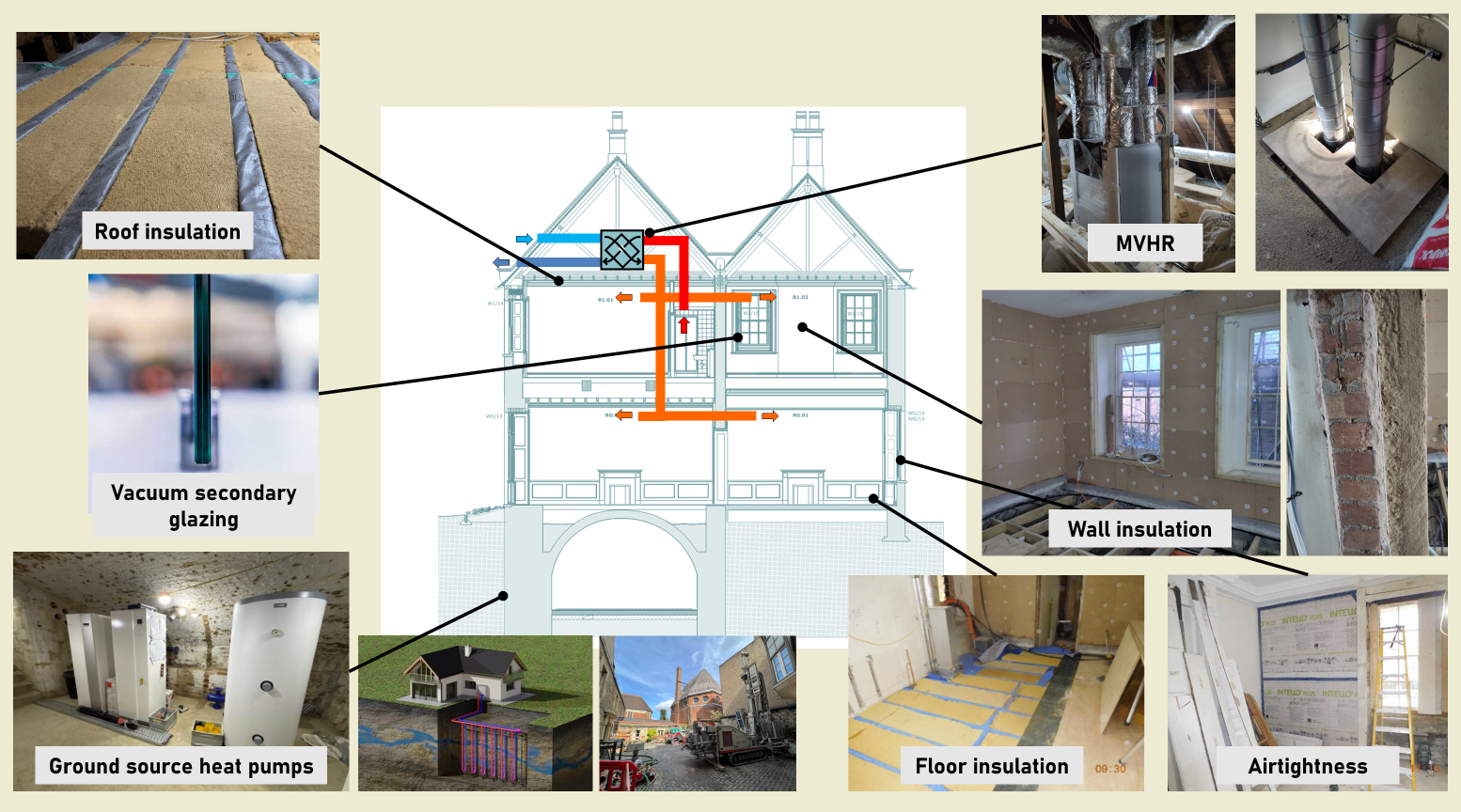Frewin Hall: A historic transformation for a sustainable Future
Images of fabric and services retrofit measures at Frewin Hall, Brasenose College, Oxford
Frewin Hall, one of England’s oldest continuously inhabited buildings, is undergoing a pioneering retrofit at Brasenose College, Oxford. This ambitious project seamlessly blends heritage conservation with state-of-the-art energy efficiency measures, ensuring the building’s legacy continues for centuries to come.
As a Grade II* listed site in a highly sensitive conservation area, every aspect of this project has been carefully planned to respect its rich history. Frewin Hall’s medieval undercroft, 16th-century timber panelling and ornate plaster ceilings are just some of the architectural treasures that have been safeguarded throughout the process.
The retrofit focuses on drastically reducing energy demand while preserving the building’s fabric. Key interventions include:
Ground Source Heat Pumps (GSHP): A sustainable heating solution that eliminates gas use and significantly lowers carbon emissions
Internal Wall Insulation (IWI): Breathable, reversible insulation upgrades that enhance efficiency while retaining and preserving historic features
Secondary Glazing: Advanced vacuum-sealed glazing that improves thermal performance without altering the building’s exterior
Mechanical Ventilation with Heat Recovery (MVHR): A carefully integrated system to ensure optimal indoor air quality and energy conservation
By implementing these measures, the project will achieve an 80% reduction in energy use and eliminate reliance on fossil fuels. The result is a more sustainable, cost-efficient, and comfortable living space—all while ensuring the building’s integrity remains intact.
This project is more than just a retrofit—it’s a blueprint for the future of heritage conservation. Frewin Hall demonstrates that even the most historically significant buildings can be adapted for a net-zero future, setting a powerful precedent for sustainable preservation.
Read our detailed case study of the construction phase here.

